The Medici, Visconti, and Sforza Dynasties
Signori is the Italian word for the mighty Renaissance lords who came to rule most of the peninsula’s city-states, such as the Visconti and Sforza dynasties in Milan. While Florence, technically a republic, was dominated by the Medici family, beginning in the fifteenth century.
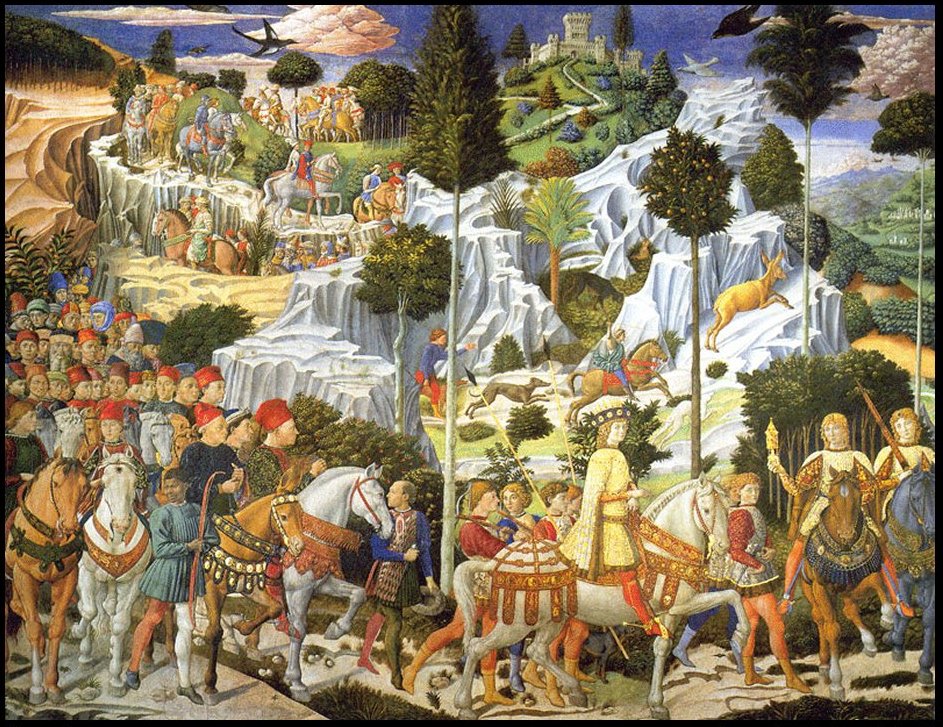
In this biblical scene for the family’s private chapel, Gozzoli included many portraits of the Medici and other prominent personages In the front, mounted on a mule on his way to Bethlehem is Cosimo the Elder.
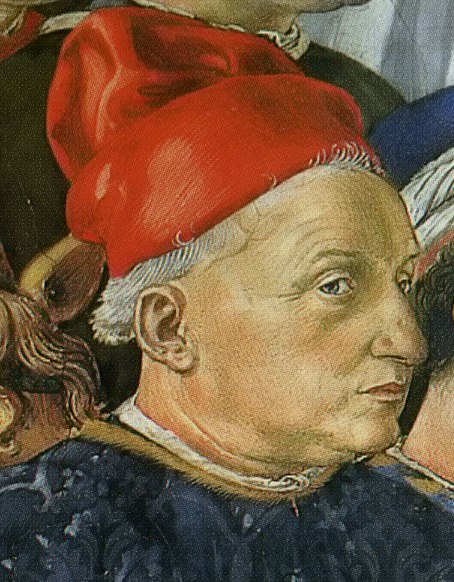
Near Cosimo is a portrait of his son Piero (“the Gouty’)
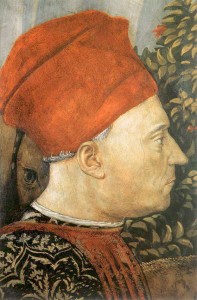
Piero’s sons—Cosimo’s grandson’s—Lorenzo (“the Magnificent”) and Giuliano de’ Medici are there as well.
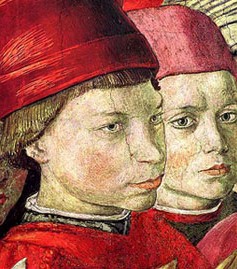
The artist did not forget to paint himself. Gozzoli also included a self-portrait in the fresco
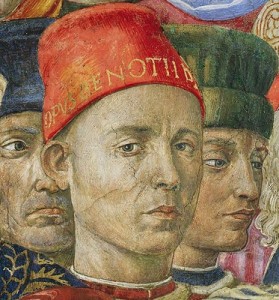
The Medici’s ally, the young Giangaleazzo Maria Sforza, future Duke of Milan is in the front row.
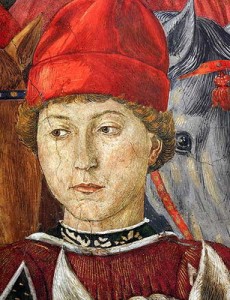
The image of the Three Kings (or Three Magi ) was a favorite of the wealthy Medici, who had made their fortune in banking.
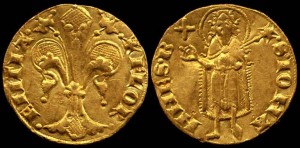
Here is another image of the Magi that Cosimo had painted for his room in the Convent of San Marco.
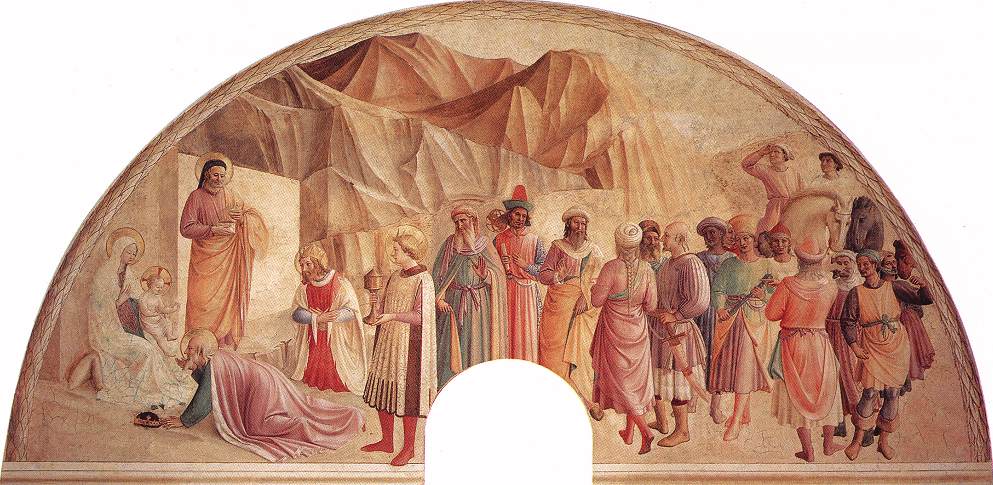
Like the legendary Three Kings who brought precious gifts to the Christ child, the Medici liked to portray themselves as royalty offering their riches to the Church.
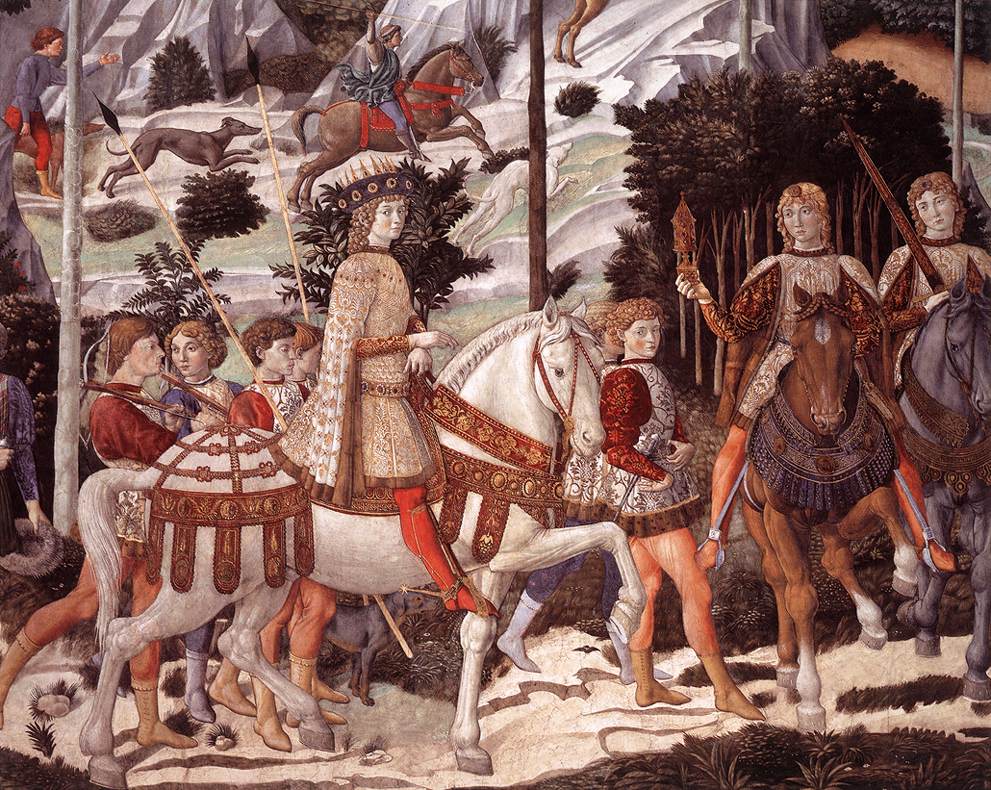
Piero di Cosimo de’ Medici was pleased when the king of France, Louis XI granted the fleur-de-lis for the Medici coat of arms.
Medici coat of arms, circle of Donatello, Palazzo Medici
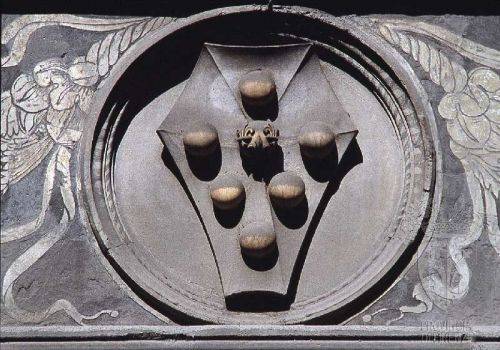
Also Renaissance lords, like the Medici, the Sforzas were not of noble descent. Francesco Sforza, lord of Milan, was the son of a condottiero, a mercenary soldier. Sforza was himself employed as a condottiero by the duke of Milan, Filippo Maria Visconti
Sforza was such a valuable soldier that he married the boss’s daughter. Here are portraits of Francesco Sforza and his wife Bianca Maria Visconti painted by Bonifacio Bembo:
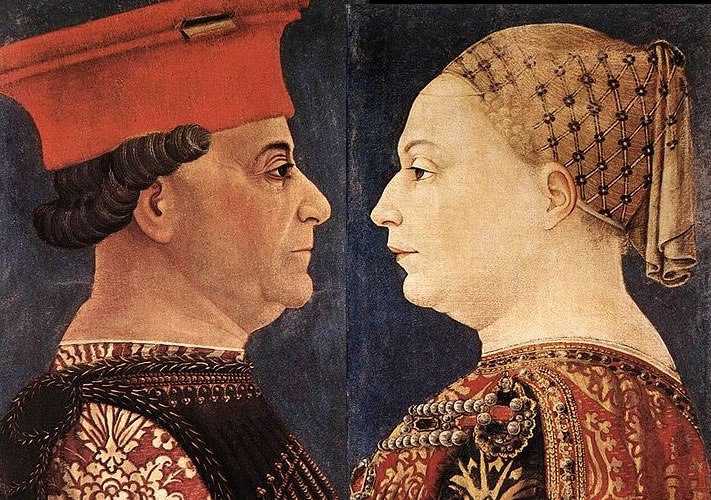
The soldier of fortune and the banker struck up a friendship that lasted a lifetime.
Cosimo de’ Medici died in 1464 and this medal was struck the year later.
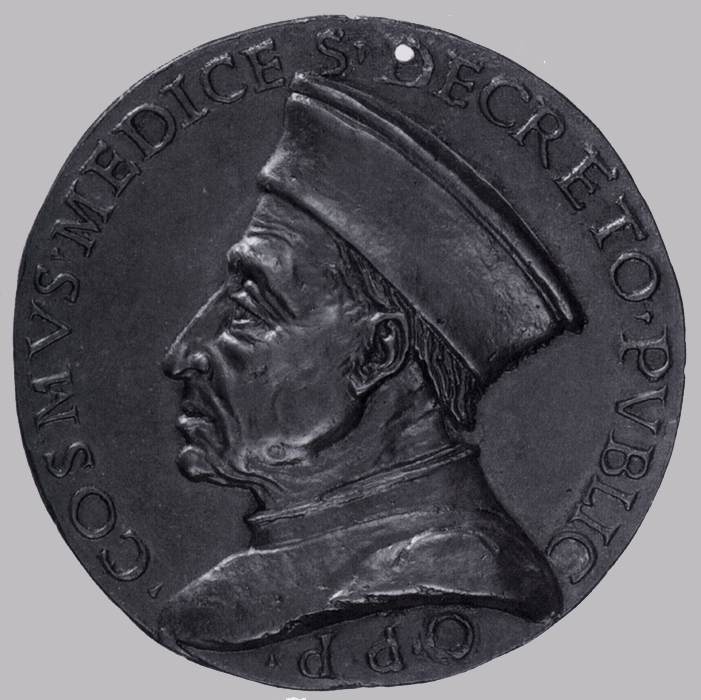
Sandro Botticelli painted this portrait shortly after 1470. It represents a young man holding up that same medal, proudly declaring his affiliation with the Medici clan. Friendships and family allegiances were critical in Renaissance society.
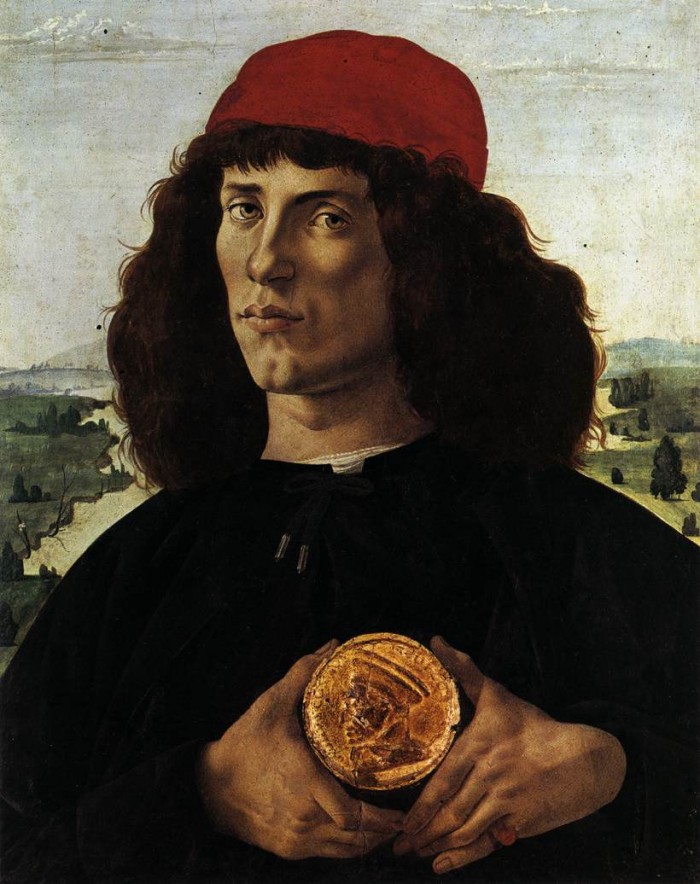

Though Cosimo de’ Medici was never the official signore or “lord” of Florence, he kept firm control over the government of the city through a network of such allegiances.
In his private manners and dress he tended to be modest and did not act like a lord, but Cosimo helped finance high-profile architectural projects, such as the renovation of the Basilica of San Lorenzo and the Dominican Convent of San Marco.


Cosimo built the Medici Palace for his family’s residence.
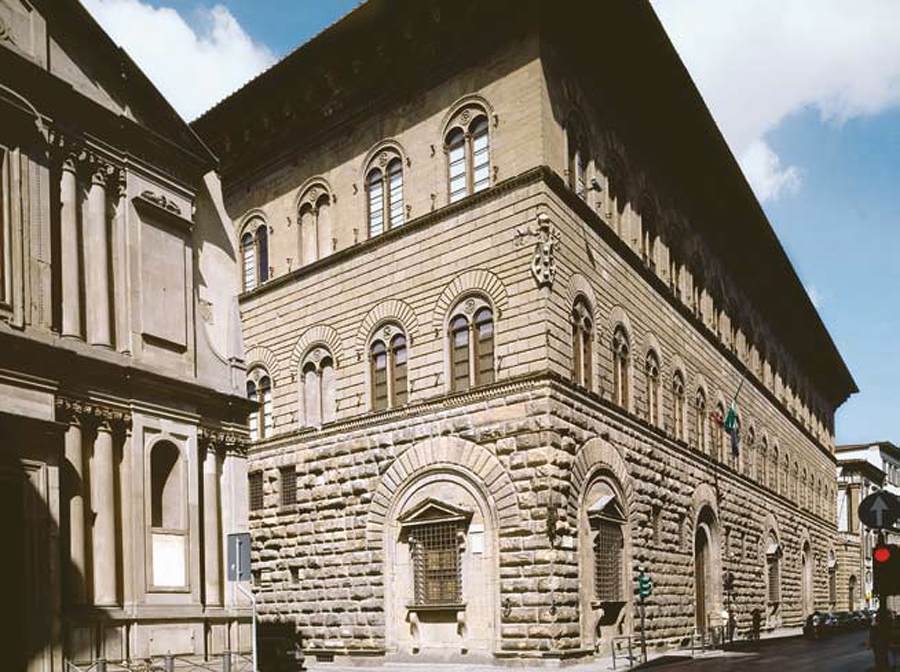
-Palazzo_Medici_courtyard_Apr_2008_(9).jpg)
A favorite artist of Cosimo’s and a personal friend, Donatello’s two statues once stood in the courtyard of the Medici Palace.


Left to right: David: Judith and Holofernes
The lords of the Medici, Visconti, and Sforza dynasties not only made a strong impact on the politics and history of the Italian Peninsula, but left lasting cultural contributions in the many Renaissance works of art, architecture, and learning as legacies of their patronage.
